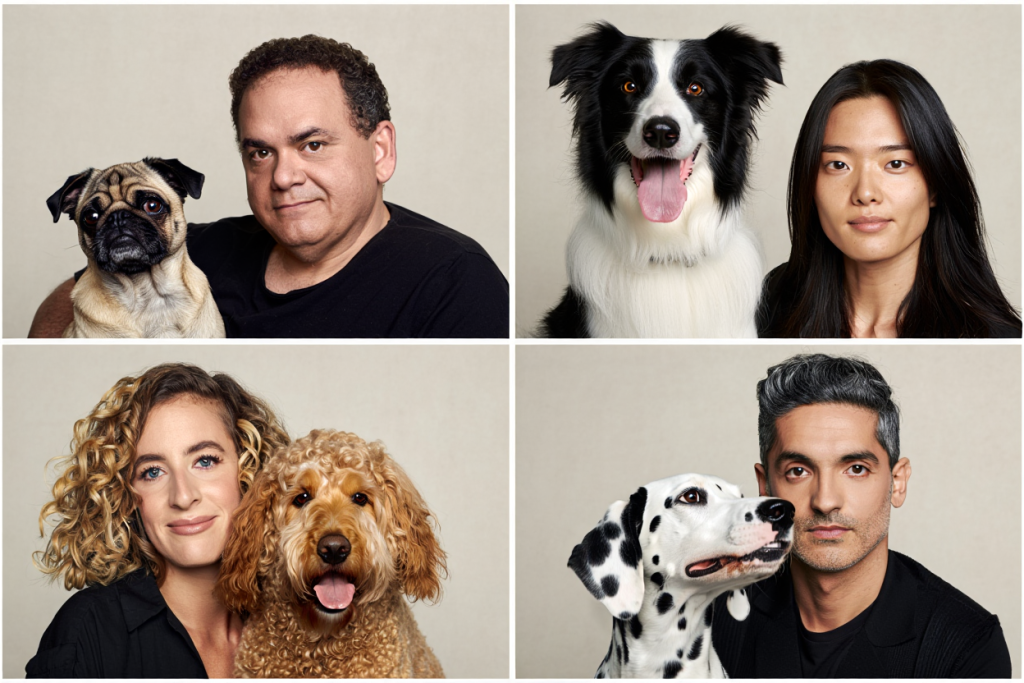Why Dogs and Their Owners Look (and Act) Alike: The Science Behind the Connection
Back in the 90s, there were many dog shows involving look-alike contests. People were competing, rocking matching outfits with their dogs, but it turns out there is an actual science behind the “dogs look like their owners” thing.
A recent review of 15 studies from all over the world showed us that not only do dogs and their humans resemble each other, but their personalities sync up more over time. Researchers asked people to match photos of dogs with their owners, and they did it way better than pure luck would allow. Some participants could correctly pair dogs with their humans just by looking at their eyes.
Another study showed that women’s hair length might match their dog’s ears.
As a result, experts claim that people are drawn to dogs that look or feel familiar to them, in of the same way we choose our partners. Moreover, some people might select a dog that reminds them of their child. With time passing, dogs and their humans influence each other’s emotions, behavior, and personalities, things that make them even more alive.
It’s pointed out that dogs and their owners often share key personality traits, especially when it comes to extroversion and neuroticism. With more time they spend together, their temperaments seem to blend.
Yena Bender, a researcher at the Max Planck Institute, explains that it’s similar to how we choose our partners, and she claims that the bond between dogs and their owners is as deep as many human relationships.
Even if there are gaps in the research, most studies had a small sample size, and it’s mostly conducted on purebred dog owners. Since mixed-breed pups are actually more common, scientists might need more data to really understand how universal this phenomenon is.
So, whether it’s about appearance, behavior, or the overall vibe, the connection between dogs and their owners is a lot stronger than we might think.
That’s not all. There are more reasons why the resemblance between dogs and their humans is so unique.

Shared environments
Because dogs and their owners live in the same environment, they experience the same daily routines and even share similar stressors. They wake up at the same time, which means on a schedule, so dogs naturally fall into sync with their humans’ way of life. Moreover, they sense when it’s time for a walk; they feel when their owner is stressed and when it’s time to wind down.
Exactly the same way people in long-term relationships start to mimic each other’s habits, dogs and their humans pick up on each other’s moods and behaviors. An owner with a fast-paced life might share his journey with a dog that’s more energetic and alert. On the flip side, a more laid-back human can influence a dog’s behavior to be easygoing and calm.
Even if there are things such as preferred sports in the house or body language and daily rituals that will start to align, dogs and humans mirror each other in ways beyond genetics. Like people in long-term relationships start to mimic each other’s habits, they pick up on each other’s moods and behaviors.
Emotional sync
We already know that dogs are incredibly perceptive, and they can sense their owners’ emotions. They often pick up on the most subtle mood shifts. When their human is feeling down, a dog can become quiet and stay close to offer comfort. They can sometimes even nudge or rest their head on them as a sign of support. On the other side, when their owner is in a playful mood, dogs will easily mirror that energy by jumping around, bringing over their favorite toy, or wagging their tails.
This is an emotional attunement that is so strong, studies have shown dogs’ stress levels can rise or fall based on their owner’s emotional state. This deep connection shapes their personality over time, making them more aligned when it comes to their reactions to the world around them.
So, dogs don’t just live with us, essentially; they feel with us.

Lifestyle influence
Adventurous people often choose high-energy dogs that are going to be able to keep up with their long runs, hikes, or road trips. On the flip side, homebodies or people with a more relaxed vibe will prefer a lower energy pup that can enjoy lounging around and stick to a cozy routine.
It’s not about the initial choice, in the end. Over time, the lifestyle will shape both the human and the dog. For example, an athletic owner who will train their dog for endurance will automatically make the dog become more active than it would otherwise.
A calmer dog owner, meanwhile, will naturally adopt a slower pace in daily habits, diet, and sleep patterns, reinforcing similarities between them. Essentially, humans and their dogs evolve together, creating a dynamic where their routines and personalities blend more and more over the years.
Selective bonding
Similar to how we share close connections with friends who easily share our interests, humor, and personality traits, we naturally bond more with dogs who “feel like us. They often match our energy, pace, and moods. It’s not about the initial choice but about how we resonate with one another over time. As we live, train, and play together, these minutes build the foundation for a meaningful connection.
Whether it’s bonding over play sessions, long walks, or just being present with each other, there is a strong, emotional understanding between a dog and the human they spend their time with.
This is a process that goes beyond just simple companionship, expanding to shared experiences, emotional and behavioral synchronization, and dynamic relationships where our habits, needs, and feelings start to align in a natural flow, making the connection feel seamless and deep, rooted in shared energy.

Facial expressions
Dogs are known to be one of the few animals able to read and mimic human facial expressions with accuracy. They are specifically skilled at interpreting the emotional cues we tend to give through our faces, becoming part of what makes our bond so unique.
If you smile often, you will notice that your dog might respond by smiling back with a relaxed, open-mouthed expression, mirroring your joy. This way, they show you their affection, reflecting your positive mood. On the other side, if you tend to be serious or have a neutral resting face, your pup might develop this stoic expression of their own, as they mirror your calm demeanor.
This emotional feedback loop contributes to strengthening their connection with us, so they intuitively understand and respond to the energy we project.
As we spend more time together, the mirrored expressions become even more pronounced and highlight the depth of the emotional bond between humans and dogs. They don’t just mimic our faces but communicate with us through them, creating an even richer level of mutual understanding.
Takeaway
Whether it’s through shared routines, emotional synchronization, or even facial expressions, the bond between dogs and their owners runs deeper than we realize. Over time, we start to mirror each other in ways that go beyond the surface, creating a unique and powerful connection that’s built on love, understanding, and shared experiences.
Read next: 13 Surprising Things Your Dog Is Afraid Of, According to Pet Experts












